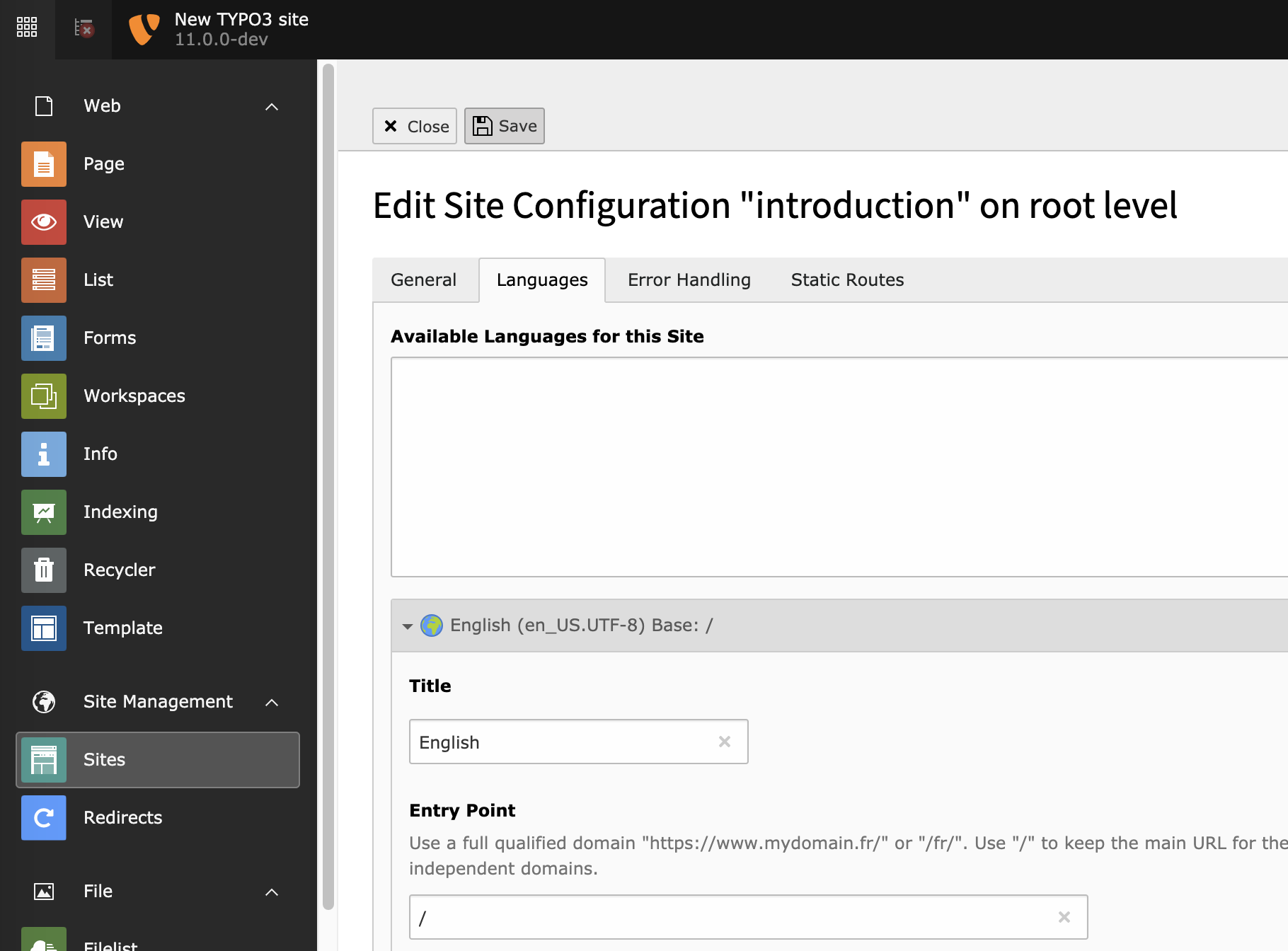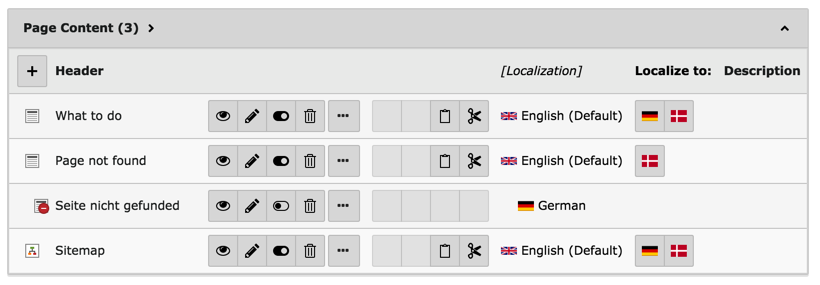Attention
TYPO3 v10 has reached end-of-life as of April 30th 2023 and is no longer being maintained. Use the version switcher on the top left of this page to select documentation for a supported version of TYPO3.
Need more time before upgrading? You can purchase Extended Long Term Support (ELTS) for TYPO3 v10 here: TYPO3 ELTS.
Setting up languages¶
Languages are defined in the site configuration on a per-rootpage basis. When creating a new page on root level via TYPO3 Backend, a very basic site configuration is generated on the fly. It prevents immediate errors due to missing configuration and can also serve as a starting point for all further actions.
The Introduction Package's default languages are English, Danish and German languages. Adding a new language is done in the "Sites" module in the "Site Management" area of the backend.

Editing form for a site configuration¶
Tip
Detailed information on how to extend the site configuration with additional languages can be found in the Site Handling Documentation.
Once you have defined at least one additional language, you have the option of translating pages and content. For example, the WEB > List module will show links for translating, provided you have translated the page and checked the "Localization view" at the bottom of the screen.

The Web > List view, with page translations and localize links for content elements¶
Translated elements appears nested "under" their default language parent element in the WEB > List view.

The Web > List view shows translations nested under their parent¶
